What is the registry? How to open, edit, delete, back up the Registry
If you are an IT geek who likes technology and likes to mess with computers, then you probably already know the Registry or even edit them. However, do you know what the Registry is or not, how to use it and what to note when editing the Registry. This article of TipsMake.com will guide you all about the Registry to learn more about them, please follow along.

1. What is the registry?
Registry is a database used to store Windows specifications and save information about changes, options and settings from Windows users. Registry contains information about hardware, software, users and one more thing is that the Registry is always updated when the user makes changes in Control Panel components, File Associations and some changes in the Options menu. of some applications, .
For example, when you install a new software on Windows, the machine will create a new line containing the location of the running file, what is the icon, how much version, how to run the software.
2. How to access the Registry
To access and edit the Registry, press Windows + R, then type regedit, press Enter. You will be moved to the interface of Registry Editor, the tool used to view, browse the registry levels as well as edit the data if necessary.

3. Structure of the Registry
Registry has 2 main components: key and value. In that key is like a folder. A key can contain many other keys (parent folder, sub-folder) or contain values (values, may look like a text file but only one simple line). The path from the parent key to the child key is a bit similar to the path of the folder in Windows and its name doesn't matter in all capital letters.
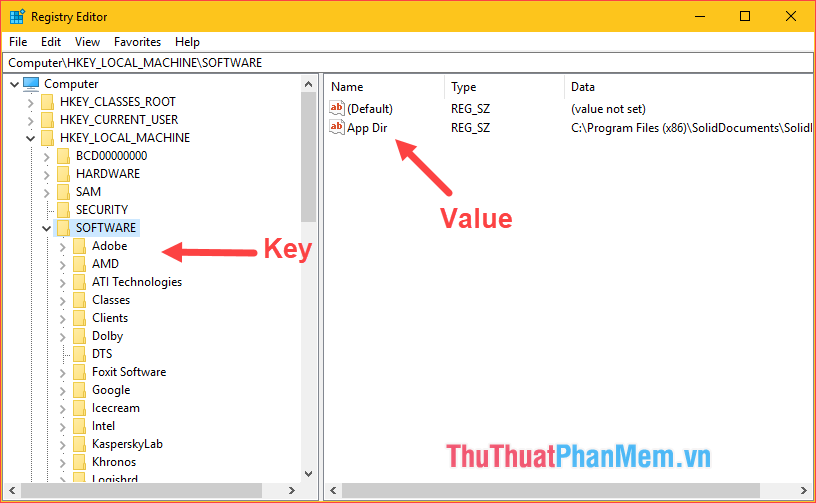
The registry has a tree structure so it is easy to manage and use. The Registry has 6 primary keys called root keys, each of which is assigned to store separate information. In the root key, there are many subkeys and these subkeys are also stored but separate information. Specifically, there are 6 root keys as follows:
- HKEY_CLASSES_ROOT : This place will save information shared for the entire system.
- HKEY_CURRENT_USER : Here will save the information for the user who is Logon.
- HKEY_LOCAL_MACHINE : Contains information about system, hardware and software.
- HKEY_USERS : Including information of all users, each user is a branch with the name is the ID number of that user.
- HKEY_CURRENT_CONFIG : Save information about the current hardware you are using.
- HKEY_DYN_DATA : This is also part of the branch HKEY_LOCAL_MACHINE (Some devices will not have this main branch)
As for the value, it is stored in the form of name / data, ie each value will have its name along with the true value. A value may contain data in one of the following types:
- REG_NONE : there is no type
- REG_SZ : any string of characters
- REG_BINARY : binary data
- REG_DWORD : an integer
- REG_LINK : a link to another Registry key
4. How to use and edit the Registry
Using the Registry is quite simple, you can go to any key and select New then select the Value type to add a new Value.
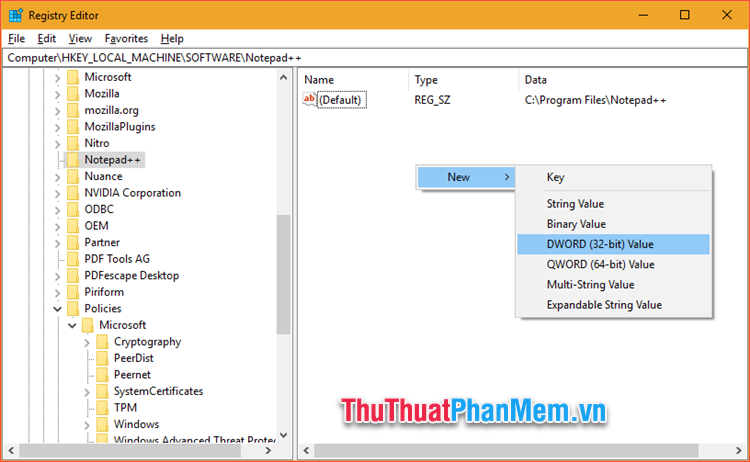
If you want to edit an existing Value, just double click on the Value and the editing window will appear. If you want to delete the Value, just right-click and select Delete, of course, we cannot edit it arbitrarily.
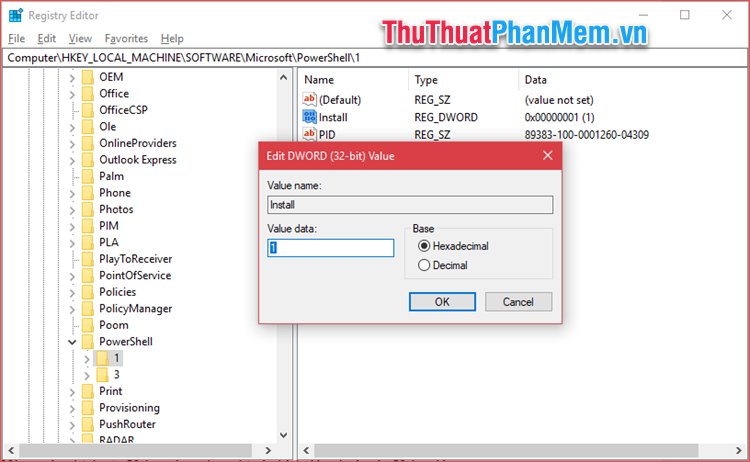
5. How to back up the Registry
Because the Registry is a place to store the configuration of Windows and software, if you correct an inappropriate value or accidentally delete an existing value, Windows or the application may become corrupted and can no longer run. Therefore, when editing the registry, you must be very careful, must know clearly what you are doing and to be safest we should back up the Registry before editing.
To save the Registry later, follow these steps:
Step 1: In the Registry Editor window, select File -> Export
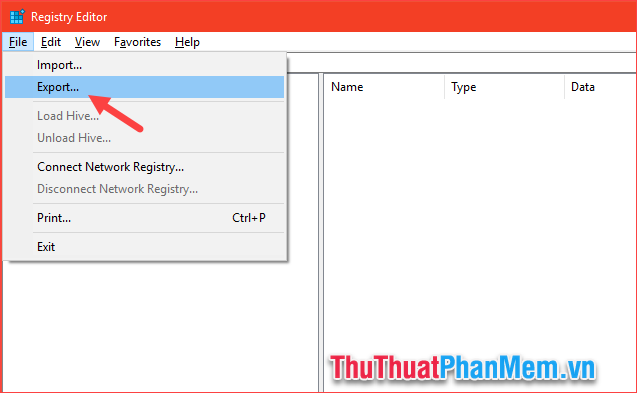
Step 2 : A new window appears, select the folder to save the backup file (Do not save to drive C, drive to install Windows), then you name the backup file and click Save.
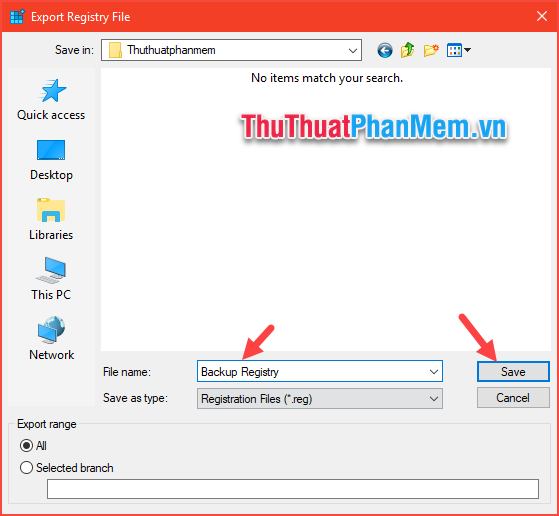
Later if you want to restore the Registry, just select File -> Import .
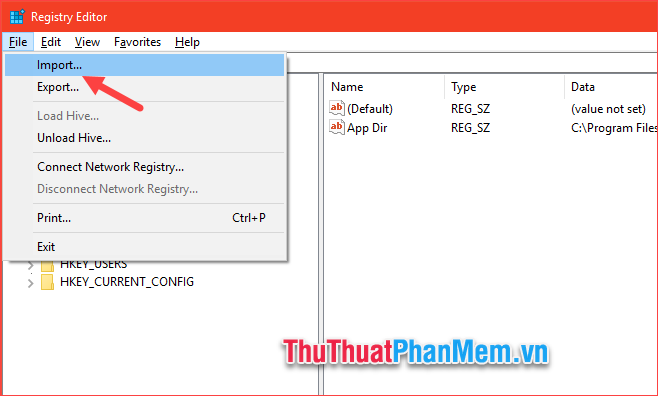
Then navigate to the Backup file you backed up earlier and click Open .
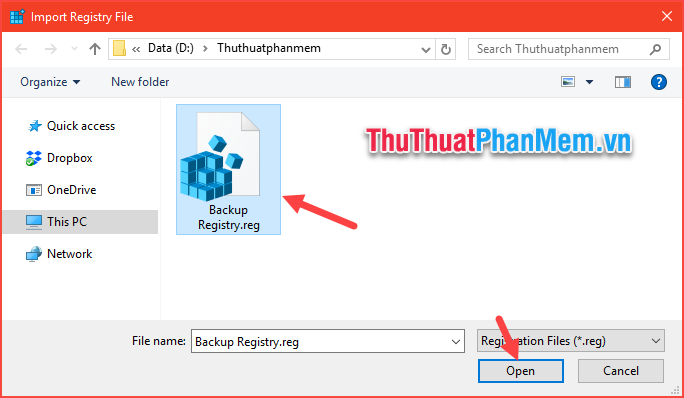
Above is all the knowledge about the Registry that TipsMake.com wants to send to you, hopefully through this article you will know how to use the Registry safely. Thank you for watching the article!
 How to recover, retrieve deleted files in trash
How to recover, retrieve deleted files in trash How to check win 32bit or 64bit like on windows 7, 10
How to check win 32bit or 64bit like on windows 7, 10 The easiest way to record audio on a computer
The easiest way to record audio on a computer What is CMD Commands in Windows
What is CMD Commands in Windows How to create Ghost files and extract ghost files with Norton Ghost
How to create Ghost files and extract ghost files with Norton Ghost Set up the program to run automatically by Task Scheduler in Windows
Set up the program to run automatically by Task Scheduler in Windows